Surface Pro vs. Samsung Galaxy Book: Which should you buy?
Should I buy the Microsoft Surface Pro or the Samsung Galaxy Book?
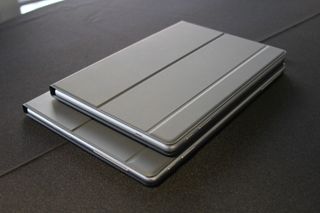
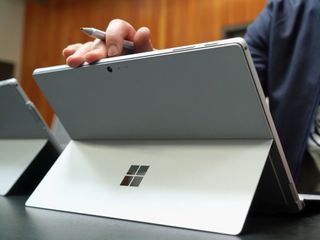
The Samsung Galaxy Book, available in both 10-inch and 12-inch options, is a direct competitor to Microsoft's updated Surface Pro. Both predecessors, the Galaxy TabPro S and the Surface Pro 4, make our list of the best 2-in-1 laptops, so there's no questioning we're excited about these updated devices. How does the Galaxy Book stack up against the new Surface Pro? Let's take a look in our head-to-head comparison.
Microsoft Surface Pro vs. Samsung Galaxy Book tech specs
A table of specs is always a good way to start a comparison. You can see below that there are quite a few similarities between the devices. All are using seventh-generation processors, all have pen support, and all come in the 2-in-1 design.
| Category | Surface Pro | Samsung Galaxy Book 10 | Samsung Galaxy Book 12 |
|---|---|---|---|
| OS | Windows 10 | Windows 10 | Windows 10 |
| Processor | Intel Core m3-7Y30Intel Core i5-7300UIntel Core i7-7660U | Intel Core m3-7Y30 | Intel Core i5-7200U |
| RAM | 4GB/8GB/16GB LPDDR3 | 4GB LPDDR3 | 8GB LPDDR3 |
| Display | PixelSense12.3-inch2736 x 18243:2 aspect ratio | TFT10.6-inch1920 x 12803:2 aspect ratio | AMOLED12-inch2160 x 14403:2 aspect ratio |
| Storage | 128GB/256GB/512GB 1TB SSD | 64GB eMMC128GB SSD | 128GB/256GB SSD |
| Graphics | Core m3: Intel HD Graphics 615Core i5: Intel HD Graphics 620Core i7: Intel Iris Plus Graphics 640 | Intel HD Graphics 615 | Intel HD Graphics 620 |
| Camera | Rear 8.0MP 1080pFront 5.0MP 1080p | Front 5.0MP | Rear 13.0MPFront 5.0MP |
| Biometrics | IR camera with Windows Hello | None | None |
| Dimensions | 11.50 inches x 7.9 inches x 0.33 inches292mm x 201mm x 8.5mm | 10.28 inches x 7.05 inches x 0.35 inches261mm x 179.07mm x 8.89mm | 11.46 inches x 7.86 inches x 0.29 inches291mm x 199.6mm x 7.3mm |
| Weight | 1.69 pounds to 1.73 pounds (0.77kg to 0.78kg) | 1.42 pounds (0.64kg) | 1.66 pounds (0.75kg) |
| Ports | USB-A 3.0Mini DisplayPortmicroSDXC card readerSurface Connect3.5mm jack | USB-C 3.1microSD card reader3.5mm jack | Two USB-C 3.1microSD card reader3.5mm jack |
| WLAN | 802.11a/b/g/n/acBluetooth 4.1 | 802.11a/b/g/n/acBluetooth 4.1 | 802.11a/b/g/n/acBluetooth 4.1 |
| WWAN | 4G LTE with nano SIM and eSIM (optional) | No | 4G LTE-A Cat 6 (optional) |
| Battery | 13.5 hours | 9 hours | 11 hours |
| Pen | Surface Pen | S Pen | S Pen |
| Price | Starting at $799 | Starting at $630 | Starting at $1,130 |
It's clear here that if you want a top performer, you need to go with the Surface Pro. The Core i7 configuration not only has a faster processor, it also has Iris Plus graphics, and you can cram in 16GB of RAM compared to 8GB in the Galaxy Book.
It should also be noted that the Core i5 processor in the Surface Pro is fanless, which gives it a bit of an edge over the Galaxy Book's fan that tends to run more often than not.
Winner: Surface Pro
Microsoft Surface Pro vs. Samsung Galaxy Book display
All displays have the same 3:2 aspect ratio.
For anyone who doesn't need a 12-inch device, the Galaxy Book 10 has a smaller form but has a TFT display with a lower resolution. At 1280p, it will still look great, but it's not going to wow like the Surface Pro or Galaxy Book 12 displays.
Between the Surface Pro's 1824p display and the Galaxy Book 12's 1440p display, you'll have a harder time choosing. Samsung's AMOLED option is gorgeous, but so is the Surface Pro's PixelSense display. Between these two, we'll call it a draw.
Winner: Tie
Get the Windows Central Newsletter
All the latest news, reviews, and guides for Windows and Xbox diehards.
Microsoft Surface Pro vs. Samsung Galaxy Book design
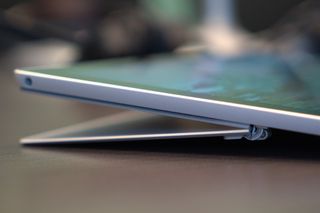
Creating a tablet that doubles as a laptop and doesn't frustrate the user is no easy feat. Microsoft has kept most of their tried-and-true design here, with a kickstand built into the tablet and a detachable keyboard and touchpad. One big change is that the kickstand on the new Surface Pro can now extend to 165 degrees, something artists will love.
The Galaxy Book's kickstand is built into the keyboard, so if you don't have it attached, you can't prop the tablet up to, say, watch a movie or TV show. Even when attached it can be a bit bothersome and isn't as adjustable as the Surface Pro. Both Galaxy Book models do weigh less than the Surface Pro, but only marginally.
Overall, the design category is close to a draw. These slim tablets are easy to carry around with you and have about the same amount of bezel. However, it's the kickstand built right into the tablet that pushes the Surface Pro ahead.
Winner: Surface Pro
Microsoft Surface Pro vs. Samsung Galaxy Book touchpad and keyboard
The Surface Pro's Type Cover acts as a sort of case for the device when it's not in use, giving it a dossier look when closed. The Galaxy Book has the same idea, but doesn't use the same Alcantara fabric.
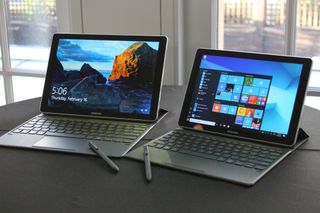
Both keyboards have backlit chiclet keys and Precision touchpads, meaning all Windows 10 gestures work here. It's hard to pick a winner, as there are no doubt many differing opinions on which keys have better travel and better spacing, so we will call this one a draw.
Winner: Tie
Microsoft Surface Pro vs. Samsung Galaxy Book features
The Galaxy Book 10 has one USB-C port while the Galaxy Book 12 has two USB-C ports, meaning if you're still using older peripherals with USB-A, you'll need some dongles. None of these devices support Thunderbolt 3, which is not surprising in a tablet form factor.
A microSD card reader on both size models allows you to expand the storage up to 256GB. The Surface Pro has retained the USB-A 3.1 port, and also has the same microSD card reader. Both have 3.5mm headphone jacks.
If you're looking for LTE connectivity, both the Galaxy Book 12 and Surface Pro are suitable options. Note that the Galaxy Book 10 is so far Wi-Fi only.
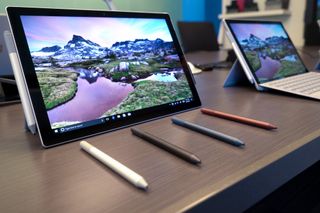
When it comes to inking, in other words using the Surface Pen and S Pen, casual users are going to get about the same experience. Artists, however, should take advantage of the new Surface Pen, especially when coupled with the Surface Dial. Also, unlike the Surface Pen's magnetic attachment, the S Pen must be attached with a loop on the keyboard.
Perhaps the biggest thing missing from the Galaxy Book is Windows Hello, the biometric security system that lets you log in with a fingerprint reader or IR camera. The Surface Pro has the IR camera, whereas the Galaxy Book has neither option. If you're logging in, it's with a good, old password.
Winner: Surface Pro
Microsoft Surface Pro vs. Samsung Galaxy Book pricing
Here's the kicker. The Galaxy Book 10 is almost $200 cheaper than the base model of the Surface Pro, and that's without factoring in the price of a Type Cover and Surface Pen. If you're just looking for a new 2-in-1 device to browse the web and watch some TV, the Galaxy Book 10 should be taken into serious consideration.
However, once we compare the Galaxy Book 12 and the Surface Pro, it becomes a bit more difficult to decide. For a Surface Pro with an Intel Core i5 processor, 256GB SSD, and 8GB of RAM, you're looking at about $1,300. A Type Cover and Surface Pen are sold separately from the Surface Pro, which will up the final price by a couple hundred dollars.
For a similar Galaxy Book 12, you're looking at about $1,330, but you also get the keyboard and S Pen included.
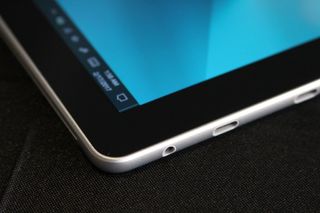
Just want the fastest device possible? The top Surface Pro Core i7 configuration has the power you need, but it's going to cost about $2,700 without adding the cost of a Type Cover and Surface Pen.
Winner: Samsung Galaxy Book
- See at Samsung | Galaxy Book 10
- See at Samsung | Galaxy Book 12 (Wi-Fi)
- See at Samsung | Galaxy Book 12 (LTE)
Microsoft Surface Pro vs. Samsung Galaxy Book overall winner
In this comparison, it's the Surface Pro that comes out on top, winning the performance category thanks to its Core i7 configuration, winning the design category thanks to its integrated kickstand, and winning the features category thanks to Windows Hello compatibility.
The Samsung Galaxy Book is still a very attractive option and will no doubt suit many people thanks to its lower price and similar function.

Daniel Rubino is the Editor-in-chief of Windows Central. He is also the head reviewer, podcast co-host, and analyst. He has been covering Microsoft since 2007, when this site was called WMExperts (and later Windows Phone Central). His interests include Windows, laptops, next-gen computing, and watches. He has been reviewing laptops since 2015 and is particularly fond of 2-in-1 convertibles, ARM processors, new form factors, and thin-and-light PCs. Before all this tech stuff, he worked on a Ph.D. in linguistics, watched people sleep (for medical purposes!), and ran the projectors at movie theaters because it was fun.
